
Robert Wilde-Evans and Arnas Savickas
MEET THE SPECIALIST
FROM SANGARIS TO SPINK
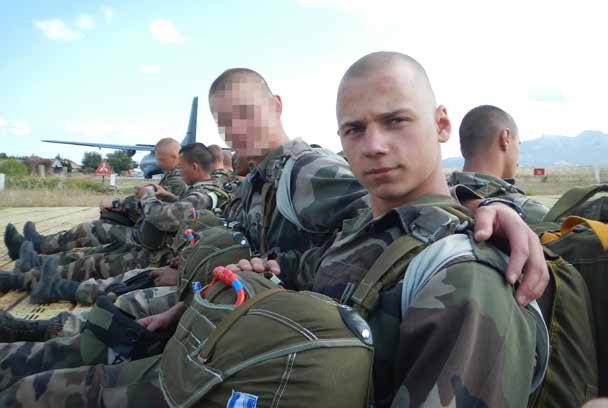
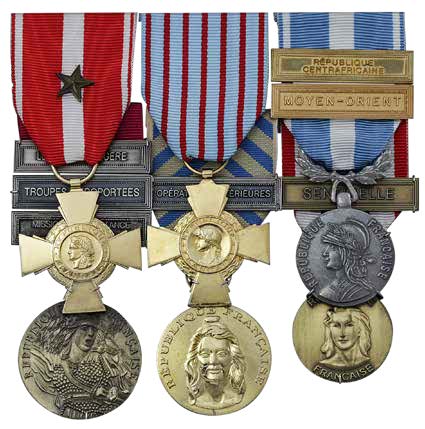
It is not often that banknotes and medals have something in common – apart from the occasional stylised battle scene – but this article aims to highlight a particularly interesting crossover!
Banknote collectors will be familiar with specialist Arnas Savickas, part of the team comprising our Banknote Department, but many people will not know that Arnas is a former Corporal of the French Foreign Legion (FFL). Decorated for gallantry over the course of his five-year career with the Croix de la Valeur Militaire, in addition to the Croix du combatant and several other campaign medals, Arnas kindly agreed to a short article outlining his military career.
Born and raised in Lithuania, but with a yearning to travel and see the world, at the age of 18 Arnas found himself in Lille and decided to apply to Servir la France. After a basic fitness test he was sent to Fort de Nogent (a fortification on the north-eastern edge of Paris, which saw significant action during both the FrancoPrussian War of 1870-71 and the Second World War) which houses an FFL recruitment centre. Here, Arnas and fellow potential recruits were subjected to rigorous rounds of interviews; those who passed were then sent on to the commune of Aubagne – the Headquarters of Foreign Legion Command and 1st Foreign Regiment.
Interestingly, Aubagne is also the location of the French Foreign Legion Museum: the
latter’s most unusual exhibit being the wooden hand of Captain Jean Danjou. Danjou is famous throughout the Legion for the Battle of Camaron in April 1863, where 65 officers and men fought a heroic last-stand action against an overwhelming force of 3,000 Mexican soldiers and of which there were only five survivors – Danjou not being one of them. The Legion celebrates ‘Camerone Day’ on 30th April every year, during which Captain Danjou’s wooden hand is proudly carried on parade by a highly honoured Legionnaire.
Aubagne is also infamous in the Legion for the high-intensity tests and exercises set to potential recruits – indeed, the permanent staff non-commissioned officers conducted what were quickly nicknamed ‘Gestapo’ interviews due to their fearsome nature. It was these NCOs who further whittled-down the selection process: those who passed went on to the next stage – four months of basic training. This involved attachment to 4e Regiment Etranger Castelnaudary learning all the initial military skills: weapons-handling, words of command, tactics and, of course, the French language. Those who finished top of their classes were able to select their regiment of choice within the FFL, with Arnas joining 2eme Régiment Étranger de Parachutistes (REP). The 2eme specialised in deploying on operations by parachute and so, in addition to familiarisation and assessments on many different types of weapon systems (including scoped rifles, explosives and guided missiles); after seven successful jumps, all those
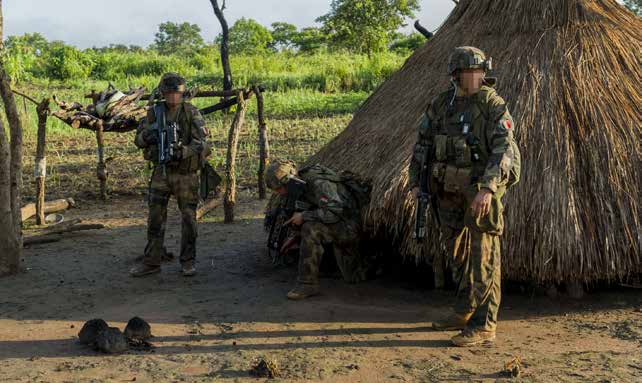
who passed were awarded their ‘wings’ and were able to select their preference for one of four Companies within the regiment: Arnas joined 4th Company, the aptly-named ‘DestructeursSnipers’.
After nearly eighteen months of service and at the age of 19, in 2014 he embarked on his first Operation – the destination being the Central African Republic – which, like most standard deployments, lasted six months. It was during this operation that Arnas was awarded two military crosses (Croix de Valeur Militaire and the Croix du combattant), in addition to the Medaille de Outre Mer.
Here Arnas takes up the story:
Experiences in my first operation were extremely intense and very eye-opening; one of the most important things I quickly learned was how distant real human limits are, in the perspective of normal activity.
One experience that led to this observation was when our team was stationed on the border between the Central African Republic and Cameroon. As there were only three small
groups of us (comprised of 5-7 men each) and we had to protect the area by day, at night one group would stay to guard the border and the
remaining two would embark on infiltration to
the nearest village where, according to reconnaissance reports, local revolutionary militias had their arms caches. To minimise the
chances of being spotted by day, we would travel with armoured vehicles at night for around 5km, then disembark and start a 2km infiltration on foot, with at least 25-30kg of equipment each. We were doing this two out of three days, non-stop for two and a half weeks, which on average left us only 1-2 hours of sleep per day. To keep going in those conditions and carrying equipment of that weight, on perhaps two hours sleep in 24, really tested my endurance – both physically and mentally – to the limit. Two particular memories still remain strong with me:
On one occasion we were ordered to assault the residence of a local gun-dealer, our objective being to confiscate all the illegal weapons … which all of them were most certainly were! This mission – as with every other – started with the usual infliltration, after which one group secured the perimeter and one went in on the assault.
With my task being to knock the front gate off its hinges as we went in, I remember looking at this gate and thinking that it was clearly too strong for one person, so with time being of the essence I asked for reinforcements: in the
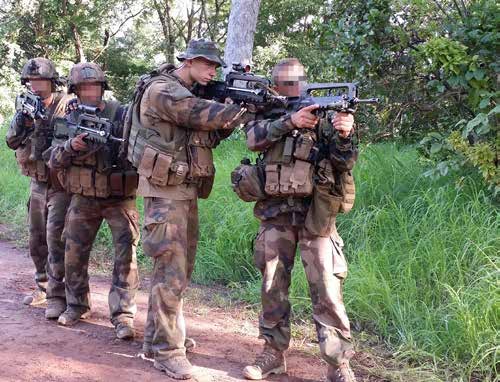
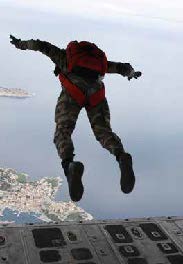
end three of us just kicked the gate out and En Avant. The rest is history …
Another significant experience took place up in the northern part of the country, much closer to Chad. After a confrontation with hostile militias equipped with Soviet-era Kalashnikovs, KPVT 14.5 heavy machine guns (particularly dangerous weapons which go through two inches of iron like a knife through butter) and PMG7 rocket-propelled grenade launchers, subsequent to a quick briefing my team was ‘on point’ (leading) to explore enemy-occupied territory, the goal being to establish liaison with leaders of the opposition so that our own leaders could start negotiations.
While moving along a forest road, my role was to look through night/thermal vision binoculars and report any movement in front. I shall never forget the first thing I saw: two groups of militiamen (with numbers quickly multiplying) all armed with AK47s and some with RPG7s. Due to previous confrontations tensions were extremely high, though it was certainly reassuring to see a well equipped and heavily armed helicopter circling above us, loaded with commandos, ready to provide support ‘just in case’. We knew more support would not be far behind as the helicopter contained a General overseeing the bigger picture – if things got bad, he could get us out.
Continuing our advance, after establishing our perimeter positions and commencing negotiation with the local militia, I suddenly realised that we had walked straight into their camp, and consequently were entirely surrounded. I hoped that our leaders knew this and took it into account while negotiating… After a couple of hours of negotiation, we withdrew 500m where the remainder of our Company were waiting to spend a night securing the area and encouraging the enemy to agree with our terms, which were all or nothing!
Although my regiment had offered me good prospects, after five years of service I met a girl in London and decided very quickly that I would like to marry her, but only upon leaving the Legion … so I departed and we were married three months later!
When I think back to my time in the French Foreign Legion I remember the excitement, the adventure, and the adrenaline: training was hard but very rewarding and cohesion and
esprit-de-corps was incredibly strong within every section, platoon and company due to the challenges we faced together. ‘Doing battle’ for
the Spink Banknote Department in pursuit of rare banknotes and collections is not quite like
serving in Africa – but it still has elements of adventure, and certainly provides that familiar
adrenaline rush on auction day!
